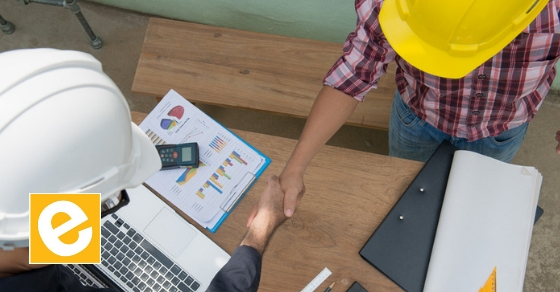
How to Choose the Best Construction Delivery Method For Your Project
Every project has different challenges and needs, that’s why contractors must consider which construction delivery method is best for the project. Within construction, as with many industries, there are many possible project delivery methods. While there are many methods, most projects use the same one. Owners should choose the best construction delivery method for their project regardless of popularity. Here are the more common delivery methods and why stakeholders benefit.
Table of Contents
Design-Bid-Build
The design-bid-build (DBB) method is the traditional way of delivering a project. One of the critical components is that it creates a distinct difference between the design and building process. Owners are at the center of this model. The owner hires an architect or engineer to design the project. Once the project completes the design phase, the owner opens it up to bids. The architect or engineer will stay with the project to answer questions and the like; however, they hand construction of the project over to a general contractor. In addition, the general contractor might hire subcontractors depending on the size of the project and their expertise. The general contractor takes control of the project and reports back to the owner. This is best for simple scope projects without a time crunch and a limited budget.
Benefits:
- The DBB method is supposed to be the most cost-efficient construction delivery method. By having contractors bid on the project, the owner is likely to get the best price.
Drawbacks:
- DBB method projects tend to have cost overruns and quality control issues, especially if there is a conflict between the design documents and actual constructibility of a project.
Construction Manager at Risk
Construction Manager at Risk (CMAR) is similar to the DBB; however, instead of selecting a general contractor or several contractors to complete the work an owner selects the construction manager. The construction manager then chooses contractors they wish to work on and are responsible for completing the project. The construction manager manages cost, estimating, overall schedule, and should check documents for constructibility. This method is best for projects with a broad scope and a high pressure to finish at the right amount of time.
Benefits:
- There is a set guaranteed the maximum price for the owner, which contains the costs for labor and materials, along with the construction manager’s fee.
- The owner is a crucial voice on the team.
Drawbacks:
- Owners might not know whether the construction manager set a reasonable price.
Integrated Project Delivery
Integrated project delivery (IPD) is a newer delivery method, that is gaining in popularity. In the method, the owner selects an architect or engineer and a construction manager before the design of the project. They sign a contract which states the collective goals and objectives. This method requires input from the general contractor at the beginning of the project. This method requires increased collaboration between the construction manager, owner, and architect/engineer. This is the best method for private sector projects with a tight schedule, without a strict scope.
Benefits:
- The three parties share risk, making projects less risky for stakeholders.
- Involving the general contractor early has shown promise.
Drawbacks:
- Many general contractors rely on subcontractors and trade contractors for highly specialized portions of a project, and these voices are missing from the design phase.
Integrated Labor Delivery
Integrated labor delivery (ILD) goes a step further than IPD. In this method, the owner would choose an architect or engineer and construction manager. The construction manager would involve trade contractors and subcontractors before the design process takes place. A joint contract is still reached between the entities after goals and objects for the project are created. The architect or engineer can quickly determine the constructibility of a design before they are obligated to construct it. This is best suited for private projects rather than public, and ones that are mostly undefined.
Benefits:
- Involving the general contractor and the trades reduces the time and rework on a project.
- The risks and rewards between all of the parties keep projects on track.
Drawbacks:
- All stakeholders split the rewards.
Conclusions
Owners must choose the best project delivery method for their circumstance. However, it can be difficult to break with tradition. As a result projects are built using one delivery method even it it isn’t beneficial to the project. In conclusion, like with other industries the construction industry must choose the right construction delivery method for each project.
Reach out today to schedule a demo and learn how eSUB can transform your business into a well-oiled construction project tracking machine!